- Home
- Isaac Asimov
Asimov's New Guide to Science Page 2
Asimov's New Guide to Science Read online
Page 2
The one-celled paramecium, moving about in a searching way, cannot have conscious volitions and desires in the sense that we do, but it has a drive, even if only a “simple” physical-chemical one, which causes it to behave as if it were investigating its surroundings for food or safety, or both. And this “act of curiosity” is what we most easily recognize as being inseparable from the kind of life that is most akin to ours.
As organisms grew more intricate, their sense organs multiplied and became both more complex and more delicate. More messages of greater variety were received from and about the external environment. At the same time, there developed (whether as cause or effect we cannot tell), an increasing complexity of the nervous system, the living instrument that interprets and stores the data collected by the sense organs.
THE DESIRE TO KNOW
There comes a point where the capacity to receive, store, and interpret messages from the outside world may outrun sheer necessity. An organism may be sated with food, and there may, at the moment, be no danger in sight. What does it do then?
It might lapse into an oysterlike stupor. But the higher organisms at least still show a strong instinct to explore the environment. Idle curiosity, we may call it. Yet, though we may sneer at it, we judge intelligence by it. The dog, in moments of leisure, will sniff idly here and there, pricking up its ears at sounds we cannot hear; and so we judge it to be more intelligent than the cat, which in its moments of leisure grooms itself or quietly and luxuriously stretches out and falls asleep. The more advanced the brain, the greater the drive to explore, the greater the “curiosity surplus.” The monkey is a byword for curiosity. Its busy little brain must and will be kept going on whatever is handy. And in this respect, as in many others, man is a supermonkey.
The human brain is the most magnificently organized lump of matter in the known universe, and its capacity to receive, organize, and store data is far in excess of the ordinary requirements of life. It has been estimated that, in a lifetime, a human being can learn up to 15 trillion items of information.
It is to this excess that we owe our ability to be afflicted by that supremely painful disease, boredom. A human being, forced into a situation where one has no opportunity to utilize one’s brain except for minimal survival, will gradually experience a variety of unpleasant symptoms, up to and including serious mental disorganization. The fact is that the normal human being has an intense and overwhelming curiosity. If one lacks the opportunity to satisfy it in immediately useful ways, one will satisfy it in other ways—even regrettable ways to which we have attached admonitions such as “Curiosity killed the cat,” and “Mind your own business.”
The overriding power of curiosity, even with harm as the penalty, is reflected in the myths and legends of the human race. The Greeks had the tale of Pandora and her box. Pandora, the first woman, was given a box that she was forbidden to open. Quickly and naturally enough she opened it and found it full of the spirits of disease, famine, hate, and all kinds of evil—which escaped and have plagued the world ever since.
In the Biblical story of the temptation of Eve, it seems fairly certain (to me, at any rate) that the serpent had the world’s easiest job and might have saved his words: Eve’s curiosity would have driven her to taste the forbidden fruit even without external temptation. If you are of a mind to interpret the Bible allegorically, you may think of the serpent as simply the representation of this inner compulsion. In the conventional cartoon picturing Eve standing under the tree with the forbidden fruit in her hand, the serpent coiled around the branch might be labeled “Curiosity.”
If curiosity can, like any other human drive, be put to ignoble use—the prying invasion of privacy that has given the word its cheap and unpleasant connotation—it nevertheless remains one of the noblest properties of the human mind. For its simplest definition is “the desire to know.”
This desire finds its first expression in answers to the practical needs of human life: how best to plant and cultivate crops, how best to fashion bows and arrows, how best to weave clothing—in short, the “applied arts.” But after these comparatively limited skills have been mastered, or the practical needs fulfilled, what then? Inevitably the desire to know leads on to less limited and more complex activities.
It seems clear that the “fine arts” (designed to satisfy inchoate and boundless and spiritual needs) were born in the agony of boredom. To be sure, one can easily find more mundane uses and excuses for the fine arts. Paintings and statuettes were used as fertility charms and as religious symbols, for instance. But one cannot help suspecting that the objects existed first and the use second.
To say that the fine arts arose out of a sense of the beautiful may also be putting the cart before the horse. Once the fine arts were developed, their extension and refinement in the direction of beauty would have followed inevitably, but even if this had not happened, the fine arts would have developed nevertheless. Surely the fine arts antedate any possible need or use for them, other than the elementary need to occupy the mind as fully as possible.
Not only does the production of a work of fine art occupy the mind satisfactorily; the contemplation or appreciation of the work supplies a similar service to the audience. A great work of art is great precisely because it offers a stimulation that cannot readily be found elsewhere. It contains enough data of sufficient complexity to cajole the brain into exerting itself past the usual needs; and, unless a person is hopelessly ruined by routine or stultification, that exertion is pleasant.
But if the practice of the fine arts is a satisfactory solution to the problem of leisure, it has this disadvantage: it requires, in addition to an active and creative mind, physical dexterity. It is just as interesting to pursue mental activities that involve only the mind, without the supplement of manual skill. And, of course, such activity is available. It is the pursuit of knowledge itself, not in order to do something with it but for its own sake.
Thus, the desire to know seems to lead into successive realms of greater etherealization and more efficient occupation of the mind—from knowledge of accomplishing the useful, to knowledge of accomplishing the esthetic, to “pure” knowledge.
Knowledge for itself alone seeks answers to such questions as How high is the sky? or, Why does a stone fall? This is sheer curiosity—curiosity at its idlest and therefore perhaps at its most peremptory. After all, it serves no apparent purpose to know how high the sky is or why the stone falls. The lofty sky does not interfere with the ordinary business of life; and, as for the stone, knowing why it falls does not help us to dodge it more skillfully or soften the blow if it happens to hit us. Yet there have always been people who ask such apparently useless questions and try to answer them out of the sheer desire to know—out of the absolute necessity of keeping the brain working.
The obvious method of dealing with such questions is to make up an esthetically satisfying answer: one that has sufficient analogies to what is already known to be comprehensible and plausible. The expression “to make up” is rather bald and unromantic. The ancients liked to think of the process of discovery as the inspiration of the muses or as a revelation from heaven. In any case, whether it was inspiration, revelation, or the kind of creative thinking that goes into storytelling, the explanations depended heavily on analogy. The lightning bolt is destructive and terrifying but appears, after all, to be hurled like a weapon and does the damage of a hurled weapon—a fantastically violent one. Such a weapon must have a wielder similarly enlarged in scale, and so the thunderbolt becomes the hammer of Thor or the flashing spear of Zeus. The more-than-normal weapon is wielded by a more-than-normal man.
Thus a myth is born. The forces of nature are personified and become gods. The myths react on one another, are built up and improved by generations of myth tellers until the original point may be obscured. Some myths may degenerate into pretty stories (or ribald ones), whereas others may gain an ethical content important enough to make them meaningful within the framework of a majo
r religion.
Just as art may be fine or applied, so may mythology. Myths may be maintained for their esthetic charm or bent to the physical uses of human beings. For instance, the earliest farmers were intensely concerned with the phenomenon of rain and why it fell capriciously. The fertilizing rain falling from the heavens on the earth presented an obvious analogy to the sex act; and, by personifying both heaven and earth, human beings found an easy explanation of the release or the withholding of the rains. The earth goddess, or the sky god, was either pleased or offended, as the case might be. Once this myth was accepted, farmers had a plausible basis for the art of bringing rain—namely, appeasing the god by appropriate rites. These rites might well be orgiastic in nature—an attempt to influence heaven and earth by example.
THE GREEKS
The Greek myths are among the prettiest and most sophisticated in our Western literary and cultural heritage. But it was the Greeks also who, in due course, introduced the opposite way of looking at the universe—that is, as something impersonal and inanimate. To the myth makers, every aspect of nature was essentially human in its unpredictability. However mighty and majestic the personification, however superhuman the powers of Zeus, or Ishtar or Isis or Marduk or Odin, they were also—like mere humans—frivolous, whimsical, emotional, capable of outrageous behavior for petty reasons, susceptible to childish bribes. As long as the universe was in the control of such arbitrary and unpredictable deities, there was no hope of understanding it, only the shallow hope of appeasing it. But in the new view of the later Greek thinkers, the universe was a machine governed by inflexible laws. The Greek philosophers now devoted themselves to the exciting intellectual exercise of trying to discover just what the laws of nature might be.
The first to do so, according to Greek tradition, was Thales of Miletus, about 600 B.C. He was saddled with an almost impossible number of discoveries by later Greek writers, and it may be that he first brought the gathered Babylonian knowledge to the Greek world. His most spectacular achievement is supposed to have been predicting an eclipse for 585 B.C.—which actually occurred.
In engaging in this intellectual exercise, the Greeks assumed, of course, that nature would play fair; that, if attacked in the proper manner, it would yield its secrets and would not change position or attitude in midplay. (Over two thousand years later, Albert Einstein expressed this feeling when he said, “God may be subtle, but He is not malicious.”) There was also the feeling that the natural laws, when found, would be comprehensible. This Greek optimism has never entirely left the human race.
With confidence in the fair play of nature, human beings needed to work out an orderly system for learning how to determine the underlying laws from the observed data. To progress from one point to another by established rules of argument is to use “reason.” A reasoner may use “intuition” to guide the search for answers, but must rely on sound logic to test particular theories. To take a simple example: if brandy and water, whiskey and water, vodka and water, and rum and water are all intoxicating beverages, one may jump to the conclusion that the intoxicating factor must be the ingredient these drinks hold in common—namely, water. There is something wrong with this reasoning, but the fault in the logic is not immediately obvious; and in more subtle cases, the error may be hard indeed to discover.
The tracking down of errors or fallacies in reasoning has amused thinkers from Greek times to the present. And we owe the earliest foundations of systematic logic to Aristotle of Stagira who in the fourth century B.C. first summarized the rules of rigorous reasoning.
The essentials of the intellectual game of man-against-nature are three. First, you must collect observations about some facet of nature. Second, you must organize these observations into an orderly array. (The organization does not alter them but merely makes them easier to handle. This is plain in the game of bridge, for instance, where arranging the hand in suits and order of value does not change the cards or show the best course of play, but makes it easier to arrive at the logical plays.) Third, you must derive from your orderly array of observations some principle that summarizes the observations.
For instance, we may observe that marble sinks in water, wood floats, iron sinks, a feather floats, mercury sinks, olive oil floats, and so on. If we put all the sinkable objects in one list and all the floatable ones in another and look for a characteristic that differentiates all the objects in one group from all in the other, we will conclude: Objects denser than water sink in water, and objects less dense than water, float.
The Greeks named their new manner of studying the universe philosophia (“philosophy”), meaning “love of knowledge” or, in free translation, “the desire to know.”
GEOMETRY AND MATHEMATICS
The Greeks achieved their most brilliant successes in geometry. These successes can be attributed mainly to the development of two techniques: abstraction and generalization.
Here is an example. Egyptian land surveyors had found a practical way to form a right angle: they divided a rope into twelve equal parts and made a triangle in which three parts formed one side, four parts another, and five parts the third side—the right angle lay where the three-unit side joined the four— unit side. There is no record of how the Egyptians discovered this method, and apparently their interest went no further than to make use of it. But the curious Greeks went on to investigate why such a triangle should contain a right angle. In the course of their analysis, they grasped the point that the physical construction itself was only incidental; it did not matter whether the triangle was made of rope or linen or wooden slats. It was simply a property of “straight lines” meeting at angles. In conceiving of ideal straight lines, which are independent of any physical visualization and can exist only in imagination, the Greeks originated the method called abstraction—stripping away nonessentials and considering only those properties necessary to the solution of the problem.
The Greek geometers made another advance by seeking general solutions for classes of problems, instead of treating individual problems separately. For instance, one might have discovered by trial that a right angle appeared in triangles, not only with sides 3, 4, and 5 feet long, but also in triangles of 5, 12, and 13 feet and of 7, 24, and 25 feet. But these were merely numbers without meaning. Could some common property be found that would describe all right triangles? By careful reasoning, the Greeks showed that a triangle is a right triangle if, and only if, the lengths of the sides have the relation x² + y² = z², z being the length of the longest side. The right angle lies where the sides of length x and y meet. Thus for the triangle with sides of 3,4, and 5 feet, squaring the sides gives 9 + 16 = 25; similarly, squaring the sides of 5, 12, and 13 gives 25 + 144 = 169; and squaring 7, 24, and 25 gives 49 + 576 = 625. These are only three cases out of an infinity of possible ones and, as such, trivial. What intrigued the Greeks was the discovery of a proof that the relation must hold in all cases. And they pursued geometry as an elegant means of discovering and formulating such generalizations.
Various Greek mathematicians contributed proofs of relationships existing among the lines and points of geometric figures. The one involving the right triangle was reputedly worked out by Pythagoras of Samos about 525 B.C. and is still called the Pythagorean theorem in his honor.
About 300 B.C., Euclid gathered the mathematical theorems known in his time and arranged them in a reasonable order, such that each theorem could be proved through the use of theorems proved previously. Naturally, this system eventually worked back to something unprovable: if each theorem had to be proved with the help of one already proved, how could one prove theorem no. 1? The solution was to begin with a statement of truths so obvious and acceptable to all as to need no proof. Such a statement is called an “axiom.” Euclid managed to reduce the accepted axioms of the day to a few simple statements. From these axioms alone, he built an intricate and majestic system of “Euclidean geometry.” Never before was so much constructed so well from so little, and Euclid’s reward i
s that his textbook has remained in use, with but minor modification, for more than 2,000 years.
THE DEDUCTIVE PROCESS
Working out a body of knowledge as the inevitable consequence of a set of axioms (“deduction”) is an attractive game. The Greeks fell in love with it, thanks to the success of their geometry—sufficiently in love with it to commit two serious errors.
First, they came to consider deduction as the only respectable means of attaining knowledge. They were well aware that, for some kinds of knowledge, deduction was inadequate; for instance, the distance from Corinth to Athens could not be deduced from abstract principles but had to be measured. The Greeks were willing to look at nature when necessary; however, they were always ashamed of the necessity and considered that the highest type of knowledge was that arrived at by cerebration. They tended to undervalue knowledge directly involved with everyday life. There is a story that a student of Plato, receiving mathematical instruction from the master, finally asked impatiently, “But what is the use of all this?” Plato, deeply offended, called a slave and, ordering him to give the student a coin, said, “Now you need not feel your instruction has been entirely to no purpose.” With that, the student was expelled.
There is a well-worn belief that this lofty view arose from the Greek’s slave-based culture, in which all practical matters were relegated to the slaves. Perhaps so, but I incline to the view that the Greeks felt that philosophy was II sport, an intellectual game. Many people regard the amateur in sports as a gentleman socially superior to the professional who makes his living at it. In line with this concept of purity, we take almost ridiculous precautions to make sure that the contestants in the Olympic games are free of any taint of professionalism. The Greek rationalization for the “cult of uselessness” may similarly have been based on a feeling that to allow mundane knowledge (such liS the distance from Athens to Corinth) to intrude on abstract thought was 10 allow imperfection to enter the Eden of true philosophy. Whatever the rationalization, the Greek thinkers were severely limited by their attitude. Greece was not barren of practical contributions to civilization, but even its great engineer, Archimedes of Syracuse, refused to write about his practical inventions and discoveries; to maintain his amateur status, he broadcast only his achievements in pure mathematics. And lack of interest in earthly things—in invention, in experiment, in the study of nature—was but one of the factors that put bounds on Greek thought. The Greeks’ emphasis on purely abstract and formal study—indeed, their very success in geometry—led them into a second great error and, eventually, to a dead end.

 The Return of the Black Widowers
The Return of the Black Widowers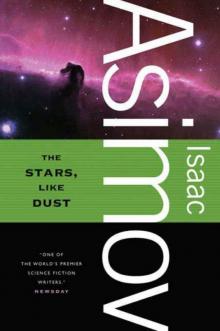 The Stars, Like Dust
The Stars, Like Dust Foundation
Foundation David Starr Space Ranger
David Starr Space Ranger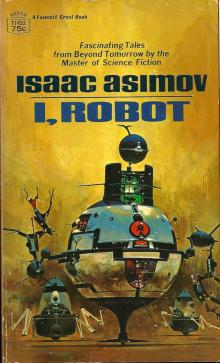 I, Robot
I, Robot Puzzles of the Black Widowers
Puzzles of the Black Widowers Casebook of the Black Widowers
Casebook of the Black Widowers The Ugly Little Boy
The Ugly Little Boy Azazel
Azazel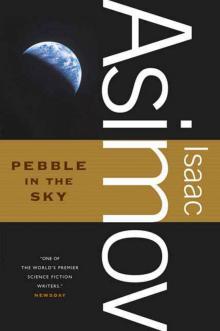 Pebble in the Sky
Pebble in the Sky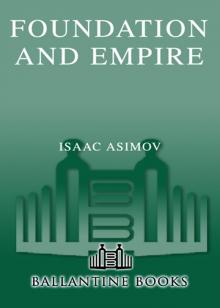 Foundation and Empire
Foundation and Empire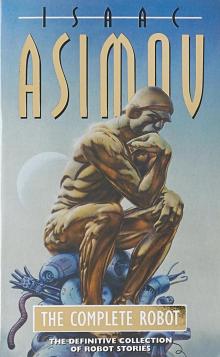 The Complete Robot
The Complete Robot Fantastic Voyage
Fantastic Voyage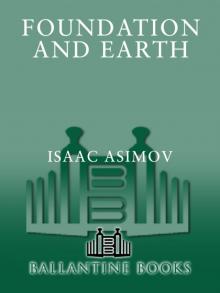 Foundation and Earth
Foundation and Earth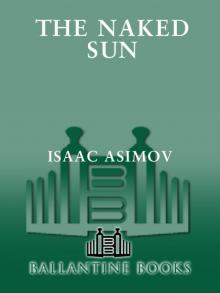 The Naked Sun
The Naked Sun The Currents of Space
The Currents of Space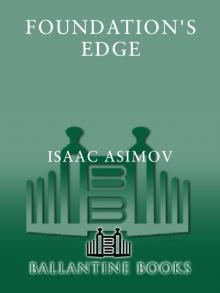 Foundation's Edge
Foundation's Edge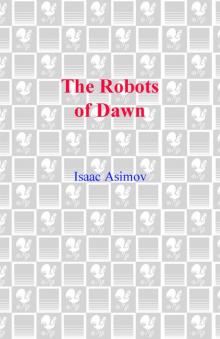 The Robots of Dawn
The Robots of Dawn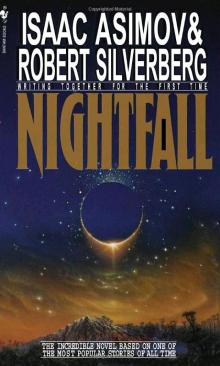 Nightfall
Nightfall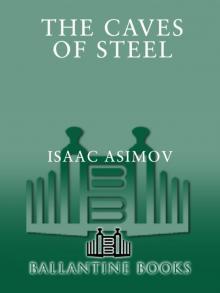 The Caves of Steel
The Caves of Steel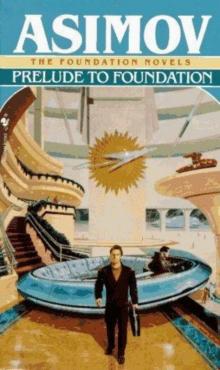 Prelude to Foundation
Prelude to Foundation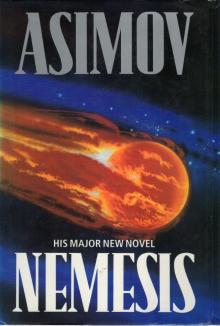 Nemesis
Nemesis Robot Dreams
Robot Dreams More Tales of the Black Widowers
More Tales of the Black Widowers The Complete Stories
The Complete Stories Robot Visions
Robot Visions Lucky Starr And The Moons of Jupiter
Lucky Starr And The Moons of Jupiter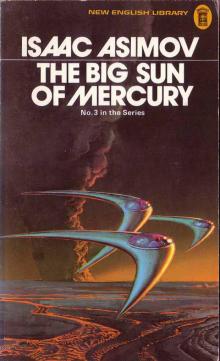 Lucky Starr and the Big Sun of Mercury
Lucky Starr and the Big Sun of Mercury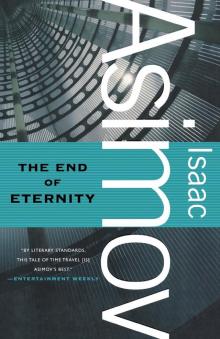 The End of Eternity
The End of Eternity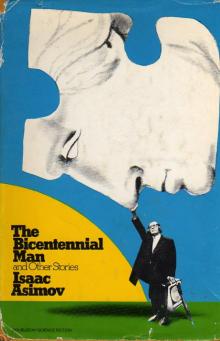 The Bicentennial Man and Other Stories
The Bicentennial Man and Other Stories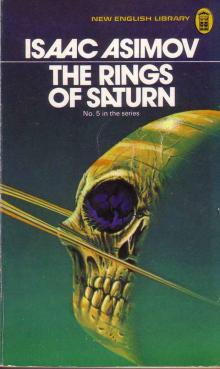 Lucky Starr And The Rings Of Saturn
Lucky Starr And The Rings Of Saturn Buy Jupiter and Other Stories
Buy Jupiter and Other Stories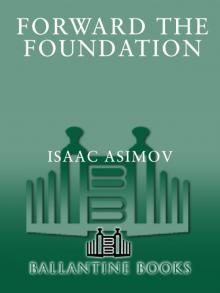 Forward the Foundation
Forward the Foundation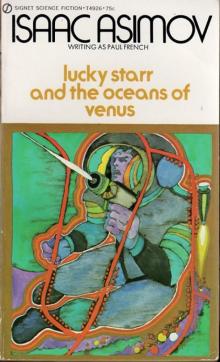 Lucky Starr and the Oceans of Venus
Lucky Starr and the Oceans of Venus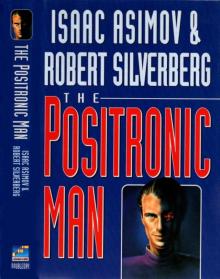 The Positronic Man
The Positronic Man The Portable Star
The Portable Star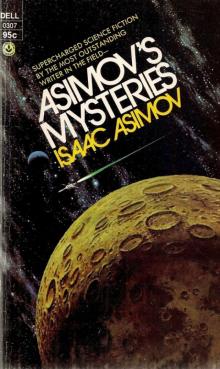 Asimovs Mysteries
Asimovs Mysteries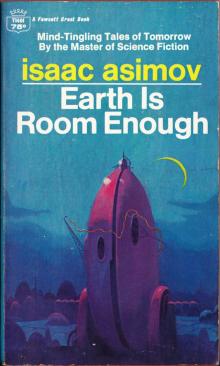 Earth Is Room Enough
Earth Is Room Enough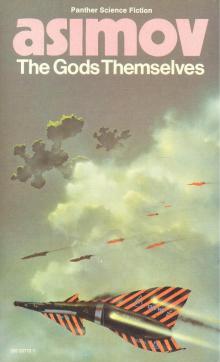 The Gods Themselves
The Gods Themselves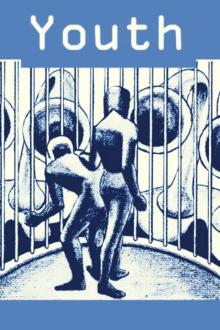 Youth
Youth The Early Asimov Volume 3
The Early Asimov Volume 3 The Winds of Change and Other Stories
The Winds of Change and Other Stories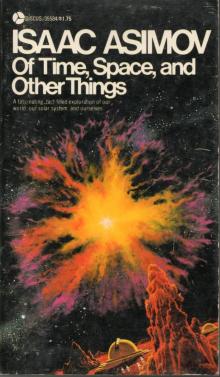 Of Time, Space, and Other Things
Of Time, Space, and Other Things Nine Tomorrows
Nine Tomorrows Time Warps
Time Warps Robots and Empire
Robots and Empire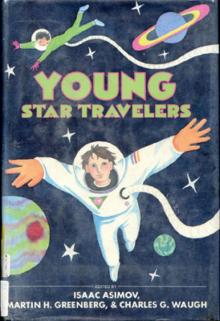 Young Star Travelers
Young Star Travelers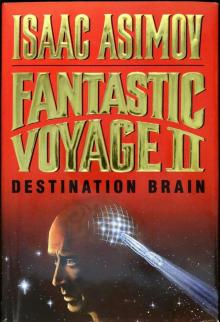 Fantastic Voyage II: Destination Brain
Fantastic Voyage II: Destination Brain Second Foundation
Second Foundation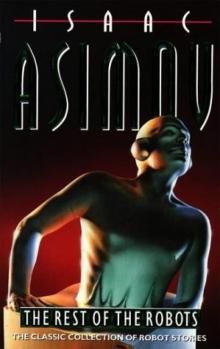 The Rest of the Robots
The Rest of the Robots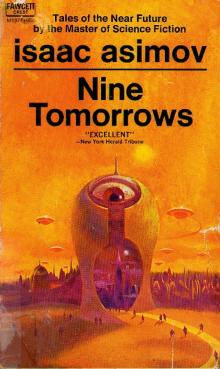 NINE TOMORROWS Tales of the Near Future
NINE TOMORROWS Tales of the Near Future Daneel Olivaw 1 - The Caves of Steel
Daneel Olivaw 1 - The Caves of Steel THE BICENTENNIAL MAN
THE BICENTENNIAL MAN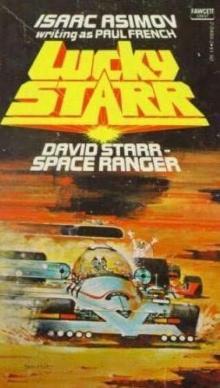 David Starr Space Ranger (lucky starr)
David Starr Space Ranger (lucky starr)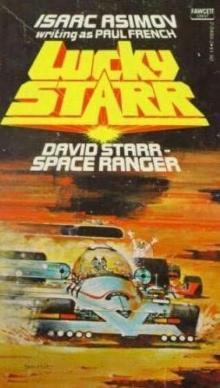 David Starr Space Ranger (ls)
David Starr Space Ranger (ls)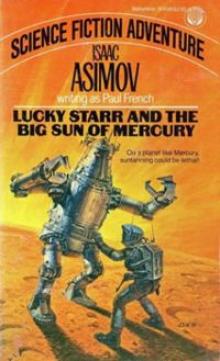 Lucky Starr And The Big Sun Of Mercury ls-4
Lucky Starr And The Big Sun Of Mercury ls-4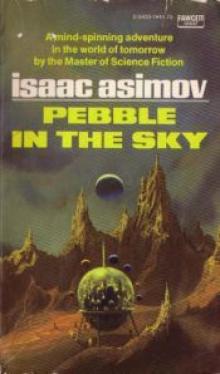 Pebble In The Sky te-1
Pebble In The Sky te-1 Asimov’s Future History Volume 9
Asimov’s Future History Volume 9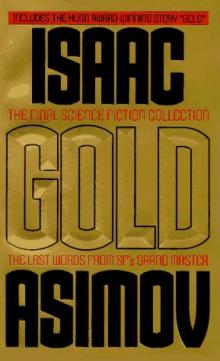 Gold: The Final Science Fiction Collection
Gold: The Final Science Fiction Collection Foundation and Earth f-7
Foundation and Earth f-7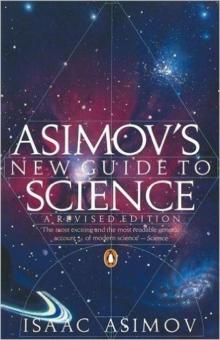 Asimov's New Guide to Science
Asimov's New Guide to Science STORM OVER WARLOCK
STORM OVER WARLOCK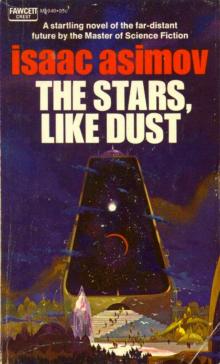 Stars, Like Dust
Stars, Like Dust Norby The Mixed-Up Robot
Norby The Mixed-Up Robot Found!
Found! Asimov’s Future History Volume 11
Asimov’s Future History Volume 11 Second Foundation f-5
Second Foundation f-5 Asimov’s Future History Volume 15
Asimov’s Future History Volume 15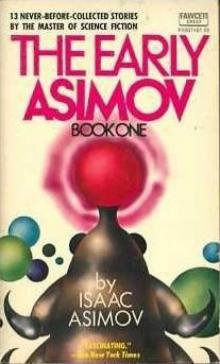 The Early Asimov. Volume 1
The Early Asimov. Volume 1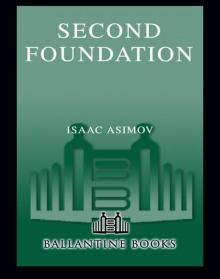 Secound Foundation
Secound Foundation Daneel Olivaw 3 - The Robots of Dawn
Daneel Olivaw 3 - The Robots of Dawn Asimov’s Future History Volume 6
Asimov’s Future History Volume 6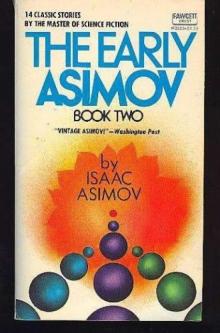 The Early Asimov. Volume 2
The Early Asimov. Volume 2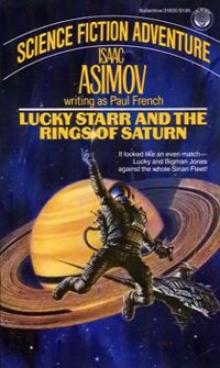 Lucky Starr And The Rings Of Saturn ls-6
Lucky Starr And The Rings Of Saturn ls-6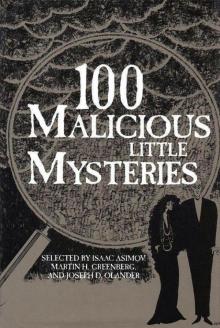 100 Malicious Little Mysteries
100 Malicious Little Mysteries Forward the Foundation f-2
Forward the Foundation f-2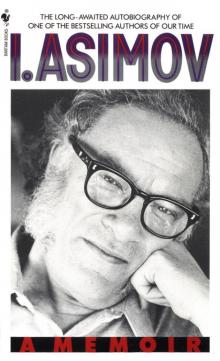 I.Asimov: A Memoir
I.Asimov: A Memoir Foundation's Edge f-6
Foundation's Edge f-6 Lucky Starr and the Pirates of the Asteroids ls-2
Lucky Starr and the Pirates of the Asteroids ls-2 Robot City 1 & 2
Robot City 1 & 2 The Fourth Science Fiction Megapack
The Fourth Science Fiction Megapack Asimov’s Future History Volume 16
Asimov’s Future History Volume 16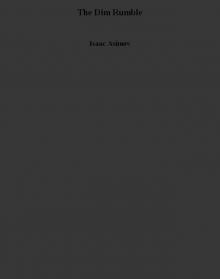 The Dim Rumble
The Dim Rumble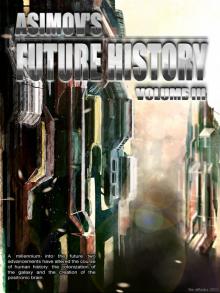 Asimov's Future History Volume 3
Asimov's Future History Volume 3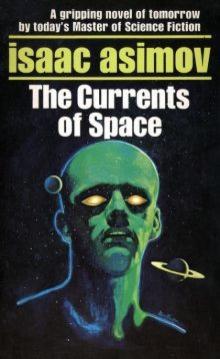 The Currents Of Space te-3
The Currents Of Space te-3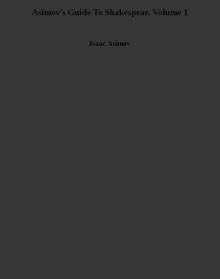 Asimov’s Guide To Shakespear. Volume 1
Asimov’s Guide To Shakespear. Volume 1 Asimov’s Future History Volume 13
Asimov’s Future History Volume 13 Asimov’s Future History Volume 12
Asimov’s Future History Volume 12 The Secret Sense
The Secret Sense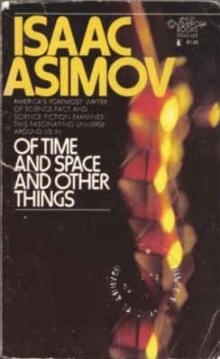 Of Time and Space and Other Things
Of Time and Space and Other Things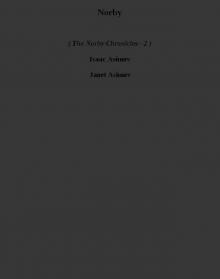 Norby tnc-2
Norby tnc-2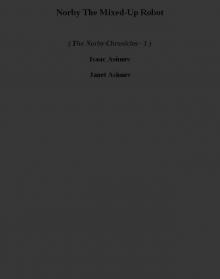 Norby The Mixed-Up Robot tnc-1
Norby The Mixed-Up Robot tnc-1 Misbegotten Missionary
Misbegotten Missionary Asimov’s Future History Volume 19
Asimov’s Future History Volume 19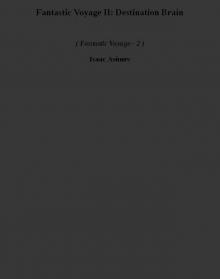 Fantastic Voyage II: Destination Brain fv-2
Fantastic Voyage II: Destination Brain fv-2 Asimov’s Future History Volume 10
Asimov’s Future History Volume 10 Asimov's Future History Volume 2
Asimov's Future History Volume 2 Feeling of Power
Feeling of Power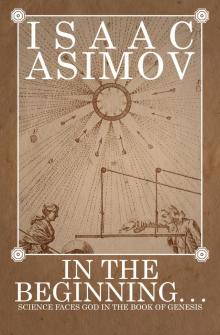 In the Beginning
In the Beginning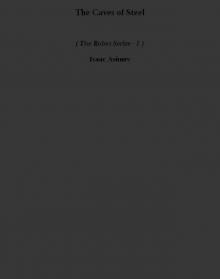 The Caves of Steel trs-1
The Caves of Steel trs-1 Asimov's Future History Vol 2
Asimov's Future History Vol 2 Caliban c-1
Caliban c-1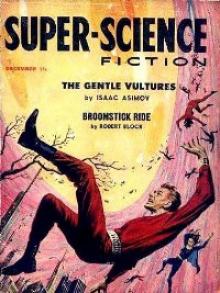 The Gentle Vultures
The Gentle Vultures Utopia c-3
Utopia c-3 Prelude to Foundation f-1
Prelude to Foundation f-1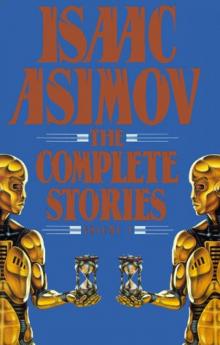 Short Stories Vol.1
Short Stories Vol.1 Asimov’s Future History Volume 8
Asimov’s Future History Volume 8 Daneel Olivaw 4 - Robots and Empire
Daneel Olivaw 4 - Robots and Empire Lucky Starr The And The Moons of Jupiter ls-5
Lucky Starr The And The Moons of Jupiter ls-5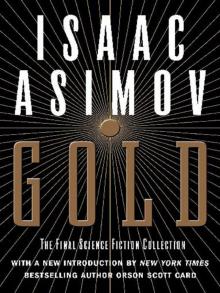 Gold
Gold Asimov’s Future History Volume 4
Asimov’s Future History Volume 4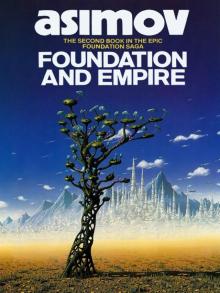 Foundation and Empire f-4
Foundation and Empire f-4 Potential
Potential Asimov’s Future History Volume 14
Asimov’s Future History Volume 14 Asimov’s Future History Volume 7
Asimov’s Future History Volume 7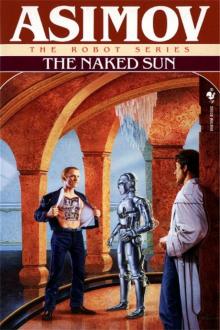 Daneel Olivaw 2 - The Naked Sun
Daneel Olivaw 2 - The Naked Sun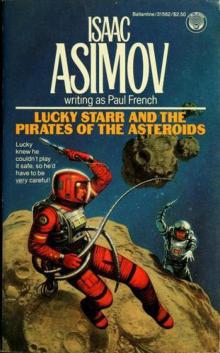 Lucky Starr and the Pirates of the Asteroids
Lucky Starr and the Pirates of the Asteroids Foundation f-3
Foundation f-3 All the Troubles of the World
All the Troubles of the World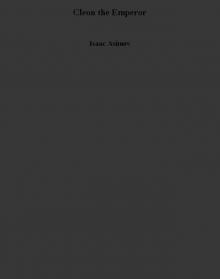 Cleon the Emperor
Cleon the Emperor Asimov's Future History Volume 5
Asimov's Future History Volume 5 Asimov’s Future History Volume 20
Asimov’s Future History Volume 20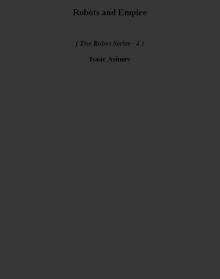 Robots and Empire trs-4
Robots and Empire trs-4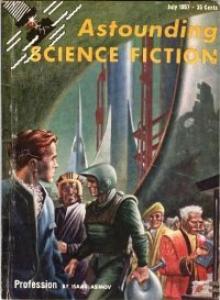 Profession
Profession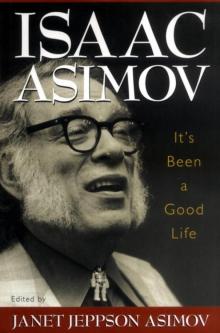 It's Been a Good Life
It's Been a Good Life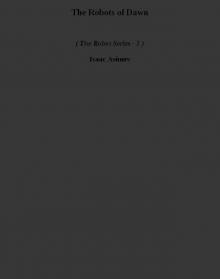 The Robots of Dawn trs-3
The Robots of Dawn trs-3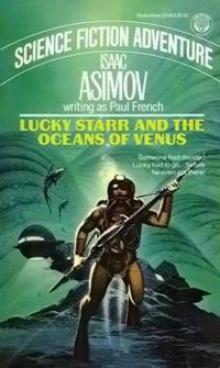 Lucky Starr And The Oceanf Of Venus ls-3
Lucky Starr And The Oceanf Of Venus ls-3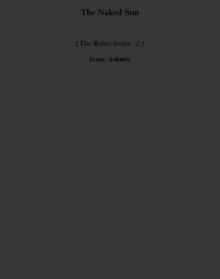 The Naked Sun trs-2
The Naked Sun trs-2 Asimov's Future History Volume 1
Asimov's Future History Volume 1